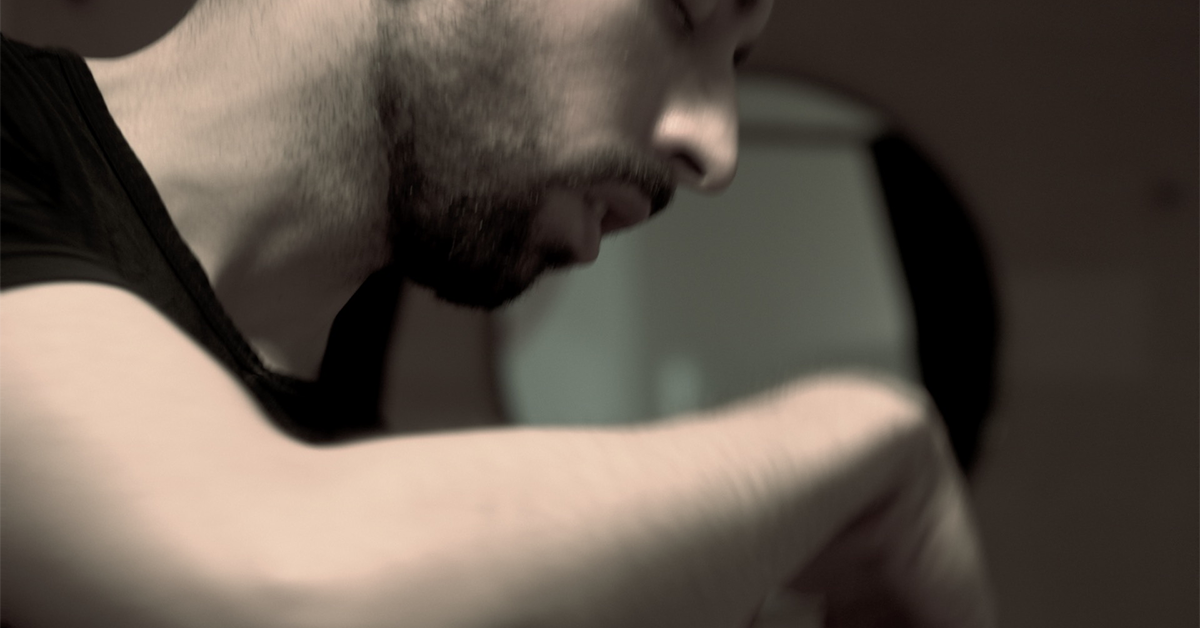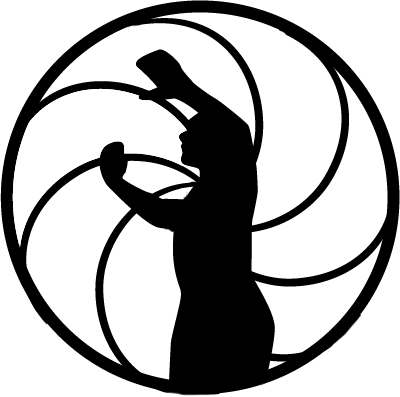Learning the Nuances of Bodymind Exploration
As I delve more into Spiral Praxis and bodymind exploration, I'm learning that the whole field of bodymind is incredibly vast. As you start making progress, you continually find deeper levels of awareness.
As a web developer in my early 30’s, with a strong interest in bodymind, I often feel I live a kind of double life. Programming isn’t necessarily a bad way to earn a living, but is in many ways directly antithetical to the cultivation of a whole mind and body. It de-emphasizes creativity in favour of analytic thinking, and forces the body into unnatural postures for hours. For years I’ve spent every day sitting at a computer, and the toll it’s taken on my body has really begun to show.
“PERSONAL INSIGHT #1
During a deep meditation, my body began to twitch and convulse uncontrollably for several minutes while the sensation of electricity flowed out of my fingers... it was very surreal, and felt tangibly like something monumental was shifting and changing inside me.”
I was experiencing tightness and soreness in my shoulders. My situation was clear to me: my shoulders were perpetually rolled forward and my lower back was bowed outwards, affecting my posture and causing my neck to stick out. After four sessions with Spiral Praxis—through bodywork, alignment exercises, and awareness exploration—I was able to discover how to change my posture internally without having to use mirrors or anything external. However, it was just the first step. For me, immediately solving the postural issues of my shoulder did not totally solve my discomfort—there were new areas of tension that revealed themselves deeper down, like an onion's inner layers.
In my adult life, I’ve realized that the tension and discomfort in my shoulders seems very closely connected to certain emotions, like stress. I find this oddly fascinating. Unconsciously, as I go about my day, I encounter certain events or situations that cause me to adopt a defensive posture. It might be while enduring criticism, or while programming under the scrutiny of an employer, or simply from reading bad news online. These events are commonplace, but they have an effect on the body. I respond to them by unconsciously tightening my shoulders and upper back. I don't experience the tightening as a side effect of the emotion, but rather as the emotion itself. I think many people must feel the same way.
Working with Depth, Precision, and Direction
Internal Shearing Motion is Like Tectonic Shifts in the Bodymind
After my initial experiences with releasing my shoulders, I was beginning to learn more principles that I could explore on my own. I learned that I needed to get more and more precise with the application of my internal adjustments. Interestingly, I also learned that anatomical knowledge plays a relatively small role in Spiral Praxis—the bulk of the internal adjustments are made through designated zones of flow, which is significantly closer to how we actually perceive and move our bodies in everyday life. In my investigations, I also noticed that most other bodymind systems use general imagery to guide people (e.g., visualizations like “pull a string through the top of your head” to elongate the spine), whereas Spiral Praxis is highly systematic and uses different body maps for people to make more complex, precise changes in their body.
For example, when I undertook to release the pain in my shoulders, I was unable to release a knot that lay very near my spine. I tried stretching it through movement or releasing it through energy modulation, all without luck. Yuji introduced me to the idea that inner movement can be thought of as aligning along axial, transverse and sagittal planes (corresponding more or less to the three spatial dimensions). I could initiate these inner movements by visualizing these planes at different depths of my body. One of the most effective of these inner movements is called a shear. In a shear, the inner movement is a shift of motion in opposite directions relative to a plane—it reminded me of the tectonic shift of geological plates, where one plane of earth shifts over another.
In Spiral Praxis the Bodymind is Conceived as Developmental Fractal Zones
The technical details needed to explore these shearing motions are what made me realize how sophisticated Spiral Praxis techniques can be. For example, the inner shearing movements that I made were very small, almost indiscernible. An outside observer would likely be unable to see the adjustments I was making. Moreover, I often observed that movement did not have to be initiated from the area of pain itself. Yuji showed me that in Spiral Praxis, there is a hierarchy of zones which cover the effortless achievement of good alignment and posture. My posture changed immediately by simply balancing inner planar forces without resorting to a mirror or any external aid. I used similar internal balancing motions to begin releasing my shoulders on a deeper level. It was strange, but nonetheless effective, to release my back by initiating movements remotely from my shoulders, hips or spine!
Another aspect of this technical bodymind work is the mental component. The internal movements I undertook had to be performed with great mindfulness and awareness. Being a thinker with a tendency to get stuck in certain patterns of thought, I had to learn not to force my body but to allow it to move in a gentler, more intuitive way. Spiral Praxis taught me introductory ways of doing this. One was to empty my mind and enter into a mindless state where thoughts did not exist. Another way was to use the energy pitch modulation reflex to slowly decrease the energy used without changing the directional flow of motion. According to Yuji, both techniques are rudimentary ways to bring movement learning into the unconscious. They, along with something I discovered myself, are described in the videos below:
“PERSONAL INSIGHT #2
My shoulders have entered into a constantly shifting and flowing state. I’ve never experienced my body doing this. I’ve noticed that I can stretch and dissolve all sorts of little discomforts directly at the point of origin. It’s really exciting.”
I attempted these exercises in different postures, some seated and others standing. I played with it for a while, experimenting with different directions of internal flow and movement, while also playing with the intensification of different spots in my shoulders. When I explored intensifying the spots in my shoulders that felt the achiest, by and by this caused some very interesting things to happen. I found my muscles opening and engaging in ways I cannot recall experiencing before. I would describe it as a kind of rotational and elongating stretch starting from my neck out to my shoulders. My shoulders were more open and flatter to the ground than before, and I was experiencing a sustained opening that felt like my muscles were engaged and releasing without being forced to do so.
The release of the physiological tension in my shoulders was wonderful, but the real importance for me was the accompanying emotional release, which I started to find in subtle ways. I noticed that I would sometimes sigh audibly when I released my own blocks. And I noticed I would sometimes feel a rush of warmth enter into the released areas. By these signs I could tell that my emotional being was relaxing. The mind is connected to the body. If something upsets you, that emotion will take up residence in your body, in your muscles and tissues, by the very simple fact that your muscles and tissues respond to your emotions.
Using Spiral Praxis To Excel in My Interests
Bodymind principles can also be applied to great advantage in a sport like climbing, or any sport for that matter. I have been exploring this in my climbing recently, and have already noticed changes to the way I climb. I could describe the changes superficially as improvement in strength and power, and that is partially true, but there has also been a much deeper change to the quality of my climbing; changes in the substance and underlying nature of my movement.
I have long valued grace and fluidity on the wall, but my desire to embody these characteristics of movement has been frustrated by a lack of coordination and control. Steph and Yuji have showed me several interesting techniques and training exercises to begin to transform the way I climb and move. The goal in these activities varies depending on the specific method in use—and there are many different methods to explore—but the underlying purpose is to activate a state of mindfulness and meditative calm, while raising the level of physical engagement and unity in the body. I am used to experiencing meditation as a passive, sitting state, and so climbing in this state is a bit of revelation for me into the nature of meditative consciousness and its potential for elevating the body to new heights.
“PERSONAL INSIGHT #3
As a climber, I have always gotten my power through my arms and legs, and very seldom directly or exclusively through my core. Trying the opposite was new to me: a sensation of stability, density, and balance in my core. I felt a centralized power that guided my limbs through movement.”
I am also practicing playing with power and the intensity of my muscles (which must remain engaged and active while climbing to remain on the wall), while allowing my mind to relax and become calm. The tension and opposition between these two regions is fascinating and appears to produce a very fluid and intuitive way of climbing. The mind and body want to mirror each other. If the mind is calm, the body wants to relax; and if the body is tense, the mind will tend to become active and perhaps even anxious. Preserving tension in the body while relaxing the mind is challenging, but the rewards are immediate. To give an example, I recently attempted a climbing problem three times that I could not figure out. I tried it again while completely relaxing my mind, allowing only very clear and simple thoughts to enter, such as 'that is my next hold' or 'I feel I can do this', but only for the briefest possible duration before emptying them out. On my first attempt in this state I quickly and easily solved the problem—the solution came instinctively to me and without effort.
Healing, Holism and Moving Forward
After 6 weeks, my shoulders are feeling much better. By learning how the mind and body interconnect, I have begun to heal through years of accumulated physical discomfort and injury; the deeper I go in my explorations of bodymind the richer the rewards I uncover. This process harnesses a multitude of techniques to explore the interconnection of the body and the mind, but at heart these techniques all begin with the simple realization that healing can, and must, begin with us. And that is precisely what I have wanted: a practice or discipline that will guide me, consistently, towards what is best for my mind and body.
Our education teaches that when something breaks, it is broken in a localized way. We get cancer of a specific organ. We break a bone in a specific part of the body. We approach solving these problems in specific ways with specific treatments. When sickness spreads to multiple parts of the body, we do not know what to do. Multiplicity is beyond our understanding. But, because everything is already connected, there is no such thing as a sickness that affects only one thing.
It seems to me that the primary lesson learned from all this is that it is possible to experience transformative, healing change in the body, without requiring a permanent, ongoing relationship with a health care professional. A teacher is sometimes necessary to guide us onto the right path, but the goal of any good teacher is eventually for the student to become a master in their own right. I learned that, in bodymind, the task becomes to quiet the conscious mind so that it may enter into a state of simplicity and openness. This openness is essential for giving rise to a condition of painlessness, and to the quality of consciousness capable of attaining flow.











